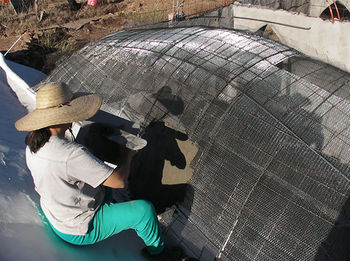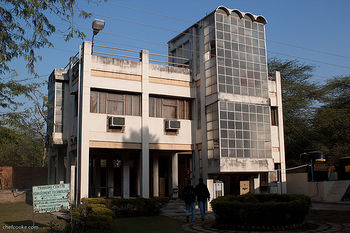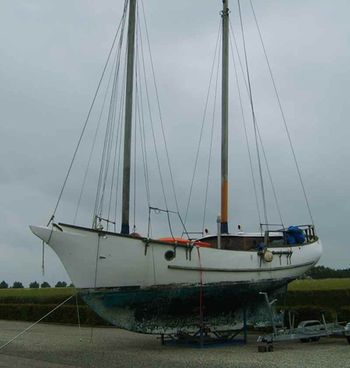Ferrocement
Main > Housing and construction
Ferrocement (FC) is a form of thin-shell construction that uses standard Portland cement, usually mixed with plaster sand. Compared to traditional construction, the cement is reinforced with more steel or fiber at a closer spacing. Reduced spacing yields uniform force dispersion and increases strength. The well-distributed and aligned reinforcement can make the FC behave like steel plates. FC was first discovered in 1848 in France by Joseph Lambot and patented by him in 1852. In other words, this predates reinforced concrete by 25-30 years. It offers possibilities for producing very thin and light-weight structures. The dependency on skilled labor is reduced, since FC application is very simple and easy. FC construction complements compressed earth bricks in many ways.
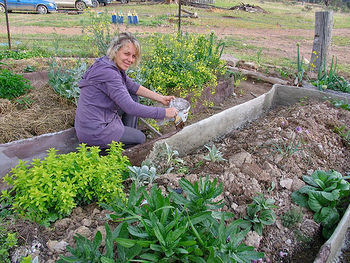
Laminated Ferrocement
(source: Ferrocement Educational Network) There is ongoing interest in Laminated Ferrocement (LFC), the discovery and patented invention of the late Martin Iorns. In LFC, a thin layer of mortar is applied to a flat surface or to the inside of a mold and wire mesh (in this case expanded metal mesh is primarily used) is pressed into the mortar. The process is repeated with more layers of mortar and more wire mesh until the desired number of layers of reinforcement is achieved. This method leads to virtually complete encapsulation of the mesh, eliminates almost all hand tying of mesh layers and yields a thinner, stronger and more reliable FC structure. The LFC method is very suited to accurate reproduction of multiple units from a mold. Click here to read a short paper on LFC.
Because LFC was developed under the protection of United States patents (see below), knowledge of this procedure is not widespread. Iorns' and Watson's patent applied to marine related structures only. The United States patent office noted that prior art eliminated the patenting of terrestrial uses of LFC. In any case, that patent has now expired and should no longer serve as a deterrent to using the lamination technique.
Recipe and more details on page High density ferrocement.
Many uses (please help expand this section)
- housing/construction: roof, walls, pipes, furniture, sinks and countertops
- agriculture: grain storage bins, canal linings, pond linings, raised bed gardening, hydroponics, aquaponics
- water and sanitation: well casings, cisterns, sedimentation tanks, slow sand filters and for sanitation facilities like septic tanks
- energy: biogas digester, biogas holder (storage tank), solar energy applications
- decorative: sculpture, faux bois (literally "fake wood"),
FC prefab building systems
Precast, prefabricated building elements (roofing channels, walling panels, beams, etc.) can easily be produced with FC. A lot of work on this has been done in India (example: Chitradeep Sengupta, architect). This system is very good for lightweight, moderate strength projects.
Use in shipbuilding
Not only was FC used extensively for shipbuilding as a cheap replacement for steel. It was, in fact, the very first application of FC back in 1848 when Frenchman Joseph Louis Lambot built a small boat. According to Ferroboats.com, ferrocement is "the cheapest and easiest form of construction for boats over 25 ft. And apart from strip-plank composite construction, it is the only viable material for large round-bilge boats within the amateur capability, without the requirements of special tools or a weather-proof building." Sounds like a good technology for low cost, open source shipbuilding. Basalt fibers could lead to a resurgence of FC ships – there is no rusting, and therefore the hulls could be made thinner. Technically, this is no longer "ferro-", but the construction techniques are otherwise very similar. The boats could have a double hull as a safety feature.
Interesting patents (please add more if you find any)
- METHOD OF PRODUCING FERRO-CEMENT PIPES, Michal Sandowicz et al. (issued 1972)
- Laminated ferro-cement structures and method of fabrication Bruce Belousofsky (issued 1979)
- Method and apparatus for constructing an offshore hollow column, Martin E. Iorns (issued 1991)
Use of alternative reinforcing materials other than steel
Because of the cost and environmental impact of steel, there is great interest in replacements. For example, Garrett Connelly from Ferrocement.com has experimented extensively with organic fibers such as bamboo and burlap. See his very detailed pages "Shelter 2009" and "Shelter 2010" for more information.
As already mentioned in the ship/boatbuilding section, basalt fibers are also an area of discusssion in the FC community. In a personal communication (RK), Paul Sarnstrom (Director, Ferrocement Educational Network) states: "To the best of my knowledge they have not yet been tested in pure FC applications. Other fibers that have been tested in FC applications include aramid, carbon, kevlar, etc. The main issues in testing relatively exotic materials is their lack of availability in small quantities. This is especially relevant given the costs of some of these materials and the smallest sizes being rolls of 100's of feet.
When compared to steel reinforcements, fibers in general fall short in the area of pullout strength. So far the best bonds seem to be with steel. In addition the Youngs modulus of fibers in general allow for too much movement before the fiber is fully loaded. Given these two factors fibers are generally relegated to crack control, rather than structural purposes. Fibers do offer some interesting and potentially useful possibilities if used in combination with steel mesh reinforcements."
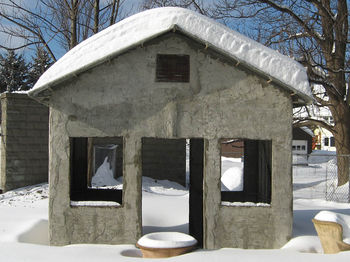
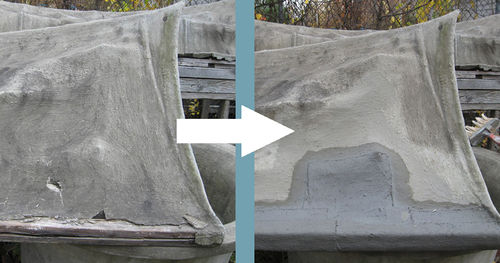
Use of alternative cements other than Portland cement
Please see the section on magnesium-based cements on the cement page as well as this article. Also, the
Book: "Ferrocement Applications in Developing Countries"
From: National Academy Of Sciences; February, 1973
(Book, 89p., now on Appropedia - overview page here)
- Introduction
- Preface
- Summary and Recommendations
- Recommendation 1: Exploratory Research into the Full Range of Ferrocement Applications
- Recommendation 2: Ferrocement for Indigenous Boats
- Recommendation 3: Ferrocement for Food-Storage Facilities
- Recommendation 4: Ferrocement in Food Technology
- Recommendation 5: Ferrocement for Low-Cost Roofing
- Recommendation 6: Ferrocement in Disaster Relief
- Recommendation 7: A Coordinating Committee
- Recommendation 8: Ferrocement Training Facilities
- Recommendation 9: An International Ferrocement Information Service
- Background Information
- Ferrocement for Boatbuilding
- Ferrocement for Food-Storage Facilities
- Ferrocement for Food-Processing Equipment
- Ferrocement for Low- Cost Roofing
- Ferrocement Materials Technology
- Appendix A
- Appendix B
- Appendix C
- Appendix D
External links
- Ferrocement Educational Network - treasure trove of information
- Ferrocement.com (multi-lingual site with many illustrations)
- FerroBoats
- Mother Earth News: "How To Build A Ferrocement Boat"
- "Flying Concrete" - light weight concrete structural & sculptural forms (Mexico)
- Bo Atkinson: "Harmonious Palette" - many innovations, incl. "ringforcement"
